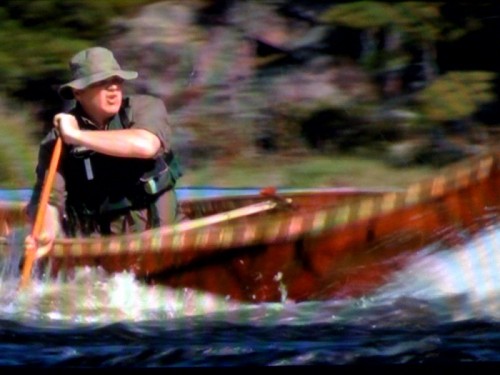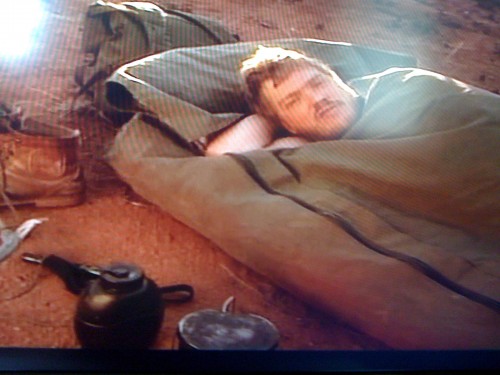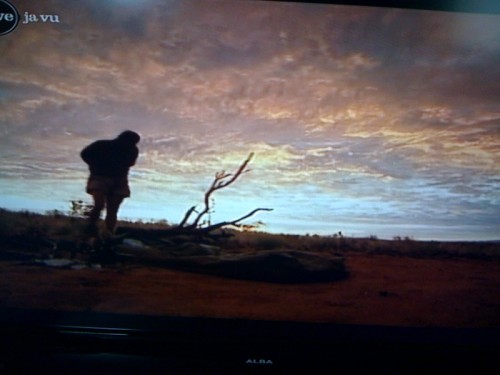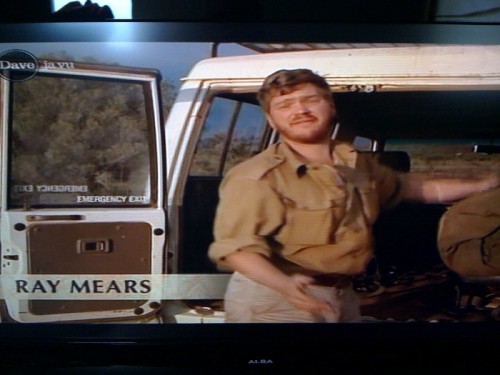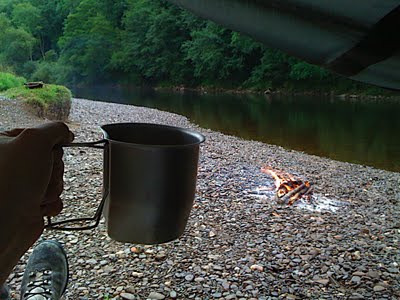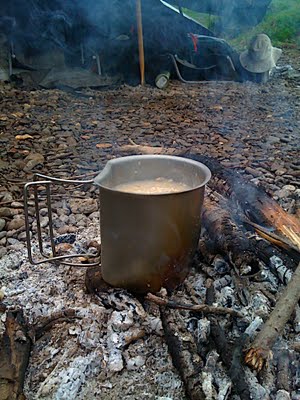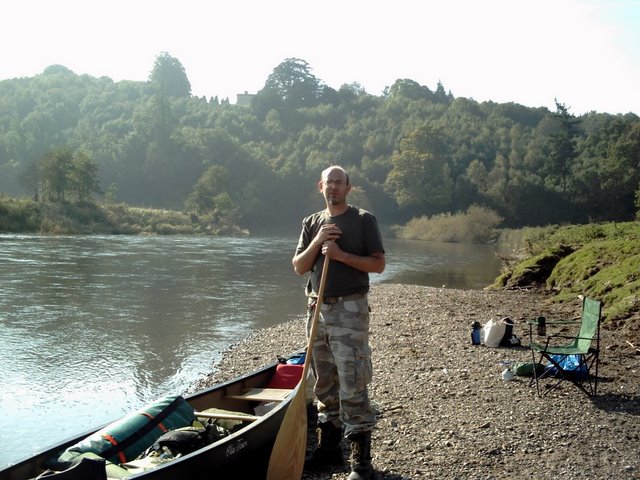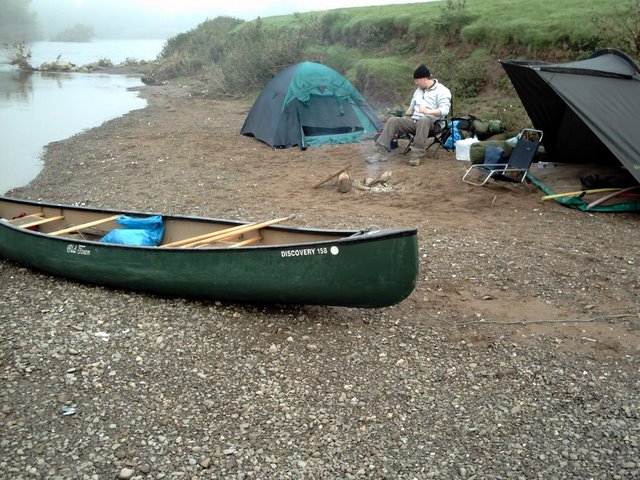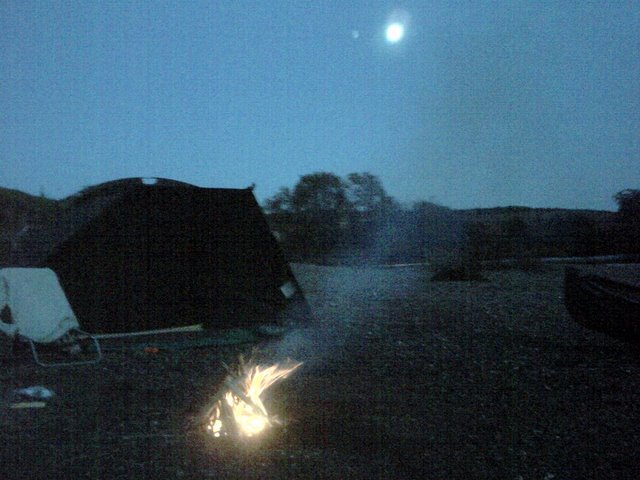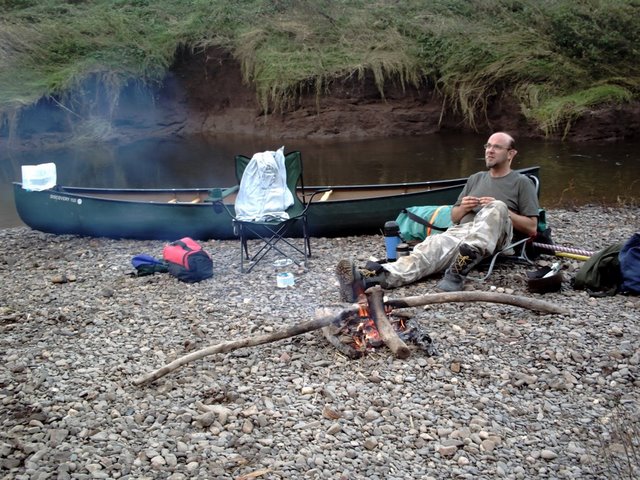In addition to the full size campfire tent and lightweight versions we’ve looked at, one of the simplest ways to achieve a ‘campfire tent’ setup would be the ‘half dome shelter’.
Source: Period Shelters -http://poisonriverparty.homestead.com/Shelters.html
In fact this construct was used widely in woodland camping by the North Eastern native American populations. One such construction was shown in Ray Mears series on “Rogers Rangers” an exploration of how WIlliam Rogers led expeditions and raiding parties in the early british military campaigns in the Frontier country with Canada, fighting both the French and the opposing native tribes. The demonstration by a descendent of the local tribes showed how a half dome shelter would be built. Interestingly the structure of the frame would be made at the camp site, from materials found thereabouts, whilst the covering was made from wide sheets of birchbark, which being the most valuable material as well as extremely lightweight, would be carried from camp to camp – a new frame simply being built as required at the next location.
Ray shows how with a fire built out front the shelter is extremely insulating, and practical allowing easy access in and out, and the ability to cook under cover using the fire in front of the shelter. These are all characteristics of the “Campfire Tent” or “Baker Tent” we were looking for.
That episode showed a beautiful end result of this technique – I am keen to try this technique, but using a tarp instead of birchbark.
So in searching for a modern version of this ‘half-dome campfire tent’ i began looking into surprisingly fishing “bivvies” which typically do have this half dome shape, as well as a rigid or semi-rigid frame built in. There are many types of these bivvies on the market, with the key differentiating from our point of view being weight and b8ulk, as we will want to carry this in a canoe, as well as portaging where necessary.
So clearly some of the larger more heavy duty fishing shelters, or “carp bivvies” or “brollys” as they are also known in the world of course fishing are not suitable in this case. The most interesting I found were these two:
The Fox Evolution XS Shelter/Bivvi.
This has a rigid, interlocking hooped frame which interestingly stays in place when the shelter is collapsed, making setting up and taking down very quick and simple, as well as great resistance against the wind. Also importantly this one can be set lower in bad weather, another feature of Bill Mason’s campfire tents – that of being highly adjustable to the weather conditions. Here’s a pic:
(a good review here) The downside of course here is that its still quite heavy at 4.2kg (if you compare to a tarp/pole/line setup), but even more importantly its bulky at 1.9m long (!) and 11cm’s diameter size when packed.
All the fishing bivvi info you’ll ever need is here at http://www.bivvies.co.uk/
The Wychwood Rogue Shelter.
This is the most lightweight of the bivvi shelters, with simple shock-corded poles in place of more rigid frames, but again the ability to change the shape significantly from wide open and high at the front very low and enclosed in bad weather. The shelter is extremely lightweight, has good fixings and guy ropes and is very easy to put up (once you’ve tried a few times – at first its quite confusing!). So this one really began to get our attention and we purchase one on Ebay for an incredibly cheap price of just £25, compared to the normal price of about £48. It was a brand new and unpacked one…and in fact the chap who sent it out actually sent out 5 in one box not realising it was a group – I let him know and he arrnged for the others to be picked up – we’re an honest lot here.
So the Wychwood shelter in backyard and canoe trip test turned out be absolutely excellent – the only downside that the poles although light, because they aren’t designed for canoe camping as such are quite long at about 5 foot, rather than being made up of shorter sections- and that does make it a bit big or rather long in the boat, although its no real problem.
The Shelter when set up really does make exactly the half-dome ‘campfire tent’ shelter we were after, and even looks very much like the native american shelters that inspired the idea. It’s a fantastic shape and has only one downside I can see – which is faced into strong winds it can take quite a bashing and become unstable – but if you’re on good ground for pegging this hasn’t been a problem for me even in extreme conditions, lowering the front egde means you can position it carefully in the wind, to get some downforce in play as well.
On less good ground for pegs it can be more of an issue. And in fact on a winter camp last year what were the most violent gusts of winds I’ve ever experienced anywhere on 3 continents hit our camp for a short while, probably half an hour only. Fortunately the direction was favourable, as the shelter got buffeted in the back edge forcing the structure down rather than taking it skyward! With some stones to weigh down the back, some extra pegging to a big log and some crossed fingers, the shelter actually withstood this onslaught, however lying in the shelter with all hell breaking loose around me and snow starting to fall (sideways) I was forced to consider ‘what to do IF it was going to fail’. In fact with this shelter there’s a good option here, and one which is actually useful part of the set-up in good weather too: by simply removing the poles you are left with an excellent simple tarp, again with good fixing point and a slight dome shape that helps enormously when constructing a tarp shelter. So the solution would have been to collapse the poles and just cover the swag with a very lower tarp cover, down and out of the wind behind the canoe.
Since then things have changed and although I haven’t yet tried constructing a shelter using sticks with this tarp, I have used it with canoe paddles attached to the canoe for stablity and that really works well – then you simply take the small rolled up tarp part of the shelter and its extremely minimalist as well as being very effective in both wind and rain, with enough room for two people and gear to sit out of the rain.
“Backyard Test” of the Wychwood shelter canoe-tarp rig:
And in use for real on a canoe trip:
So there you have it – the Wychwood shelter is our recommendation for the half-dome campfire tent shelter and as a canoe-tarp rig; so it’s a great buy for the price.
read more in our “Baker Tent Hunt” series.

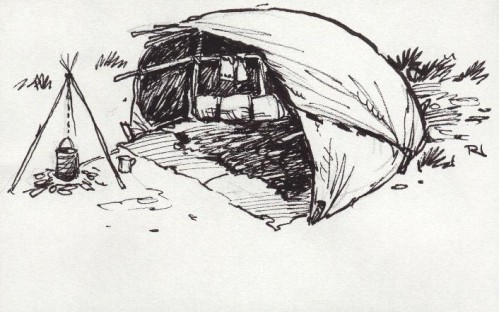
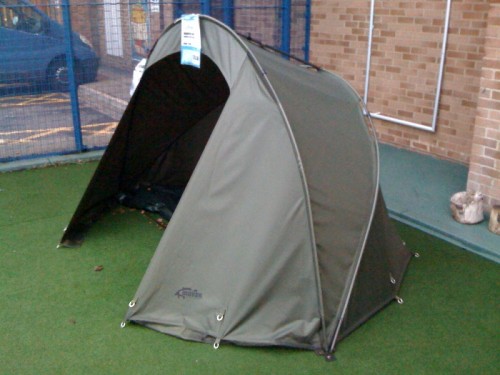

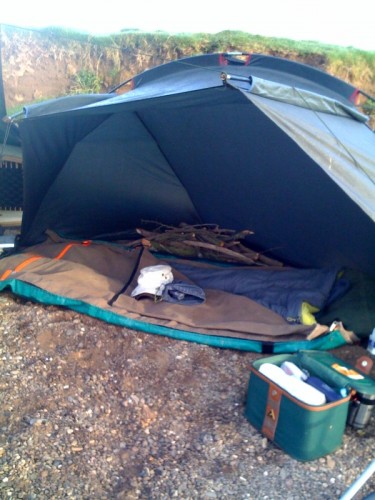
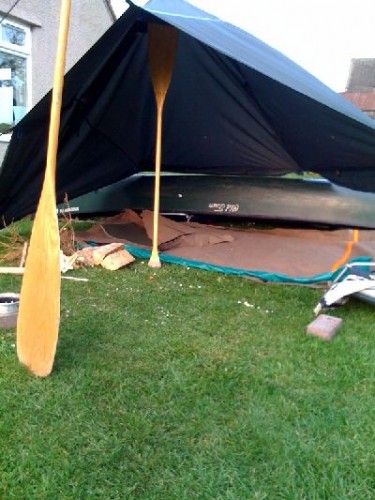
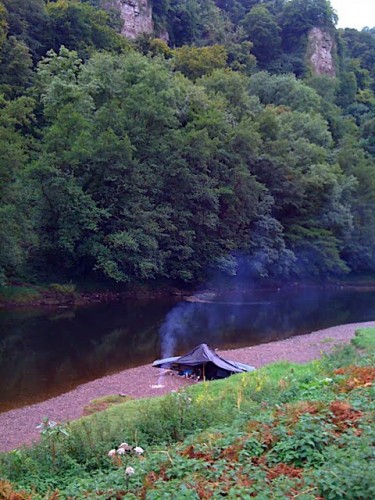
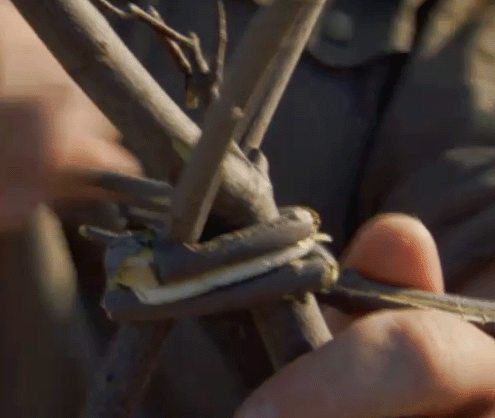

![Reblog this post [with Zemanta]](http://img.zemanta.com/reblog_e.png?x-id=965bf00c-df78-4fe6-ba95-5aa184394042)
